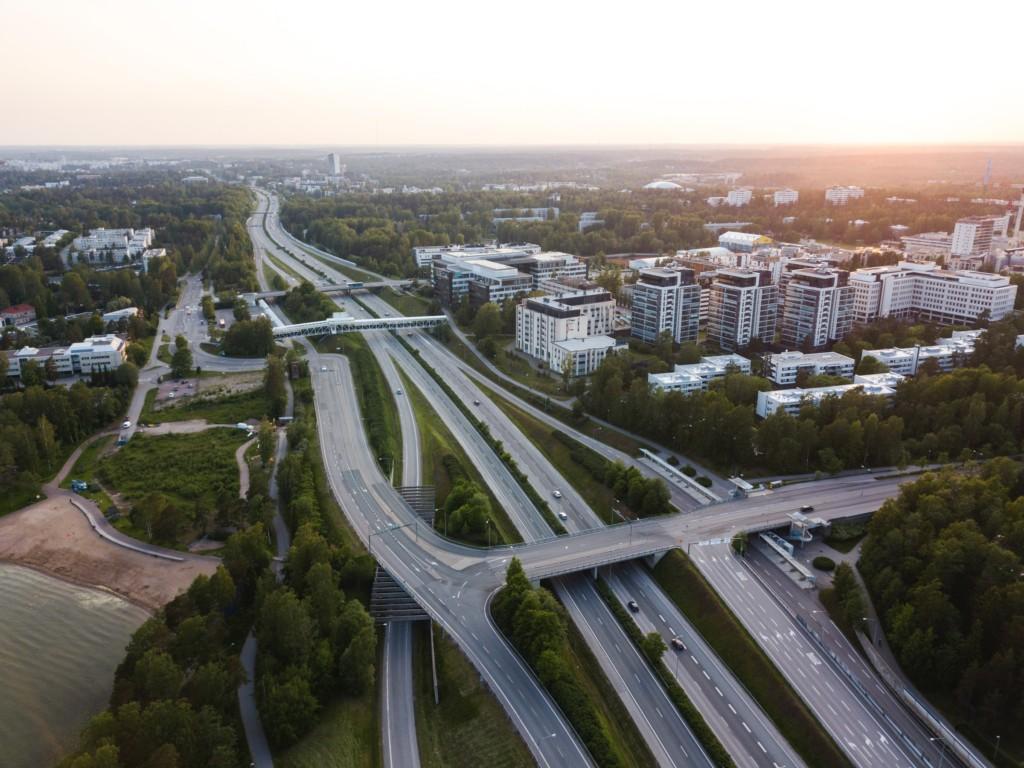”The most important questions were: what are the best connection points in the existing grid? And how will the whole system react when major heat supply directions change after connecting the heat recycling facilities into the grid?”
Panu Kauniskallio, System Designer, Fortum
On the 17th of March 2022, Microsoft and Fortum announced a unique collaboration, where Microsoft will build new datacenter areas in the capital region of Finland which Fortum will connect to the district heating network through a large-scale heat capture recycling. The project is going to be the largest data center heat recycling project in the entire world. It is estimated to provide carbon-neutral district heating for 250 000 people in the municipalities of Espoo, Kauniainen, and Kirkkonummi, also reducing annual CO2 emissions by 400 000 tons. The datacenter plays a crucial role in the Espoo Clean Heat project which aims to make the City of Espoo’s district heating carbon neutral in the 2020s.

The parties have been working on this project for some time, and we had an excellent opportunity to discuss the datacenter heat capture modeling process with Panu Kauniskallio. Panu works as a district energy system designer at Fortum and is the person responsible for the network-related technical solutions of the project with Fluidit Heat.
“My work ranges from long-term techno-economic studies on whole system level, into detailed planning of customer connections and maintenance operations.” Panu describes his daily activities at Fortum. “The most used software in my daily work is Fluidit Heat and I also regularly use network information system and customer information systems.” He continues. “I also do a lot of retrospective analysis on anomalies in the network with Fluidit Heat. Modeling allowed us to recently find a closed valve in one of the main pipelines.”
“I also do a lot of retrospective analysis on anomalies in the network with Fluidit Heat. Modeling allowed us to recently find a closed valve in one of the main pipelines.”
Panu Kauniskallio, System Designer, Fortum
Connecting new production sources of this magnitude to the district heating grid is no minor task. “I think that this type of investment cannot be undertaken without a proper and thorough modeling process. The effect of connecting new heat sources this size into the grid, cannot be understood without scenario analyses.” Panu explains when asked about the benefits of modeling in this project. “The most important questions were: what are the best connection points in the existing grid? And how will the whole system react when major heat supply directions change after connecting the heat capture facilities into the grid?” In the system that will soon be replaced by AI-driven end-to-end solutions, heat production facilities compete when providing heat to the network and it is sometimes very difficult to find the overall optimal control points for each facility in every situation. Modeling the heat production with the whole network model is really the only way to optimize everything on a system level.
“We will be using modeling also when the project advances into the construction phase since all the pipelines won’t be built at the same time and the production facility will gradually build the heat capacity to the planned value. We need to make sure that during this ramp-up phase, everything works correctly.” Panu explains how they will be using modeling with the ongoing project. “Overall, as a modeling paradigm, the datacenter heat recycling was not that complex a task. Just a couple of new production plants. The only thing was to identify the most important scenarios to model. In addition, the production of these datacenters needed to be modeled in two parts. First with the heat pump facility providing the energy and secondly with the electric boiler which only operates during very cold outdoor conditions, when the required supply temperature level exceeds the maximum supply temperature level of the heat pumps. The most complex scenario was not the peak consumption point of -26 degrees Celsius, but something warmer, and this needs to be identified when modeling such facilities.”
As global warming advances and all fields are rallied to find solutions that reduce CO2 emissions, these types of projects are the ones that make a real difference in the big picture. “It is cool to be part of something remarkable and big, that really affects the CO2 emission goals on a city level,” Panu says excitedly. To those who are looking into planning such similar projects, he wants to emphasize that the district heating model needs to be up to date on all levels and the input data needs to be as precise as possible.
Interested in Fluidit Heat and district energy modeling? Read more information here or contact us for more detailed information and pricing here.